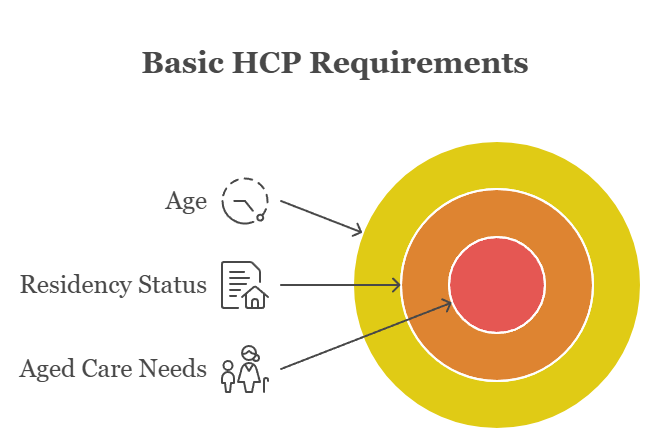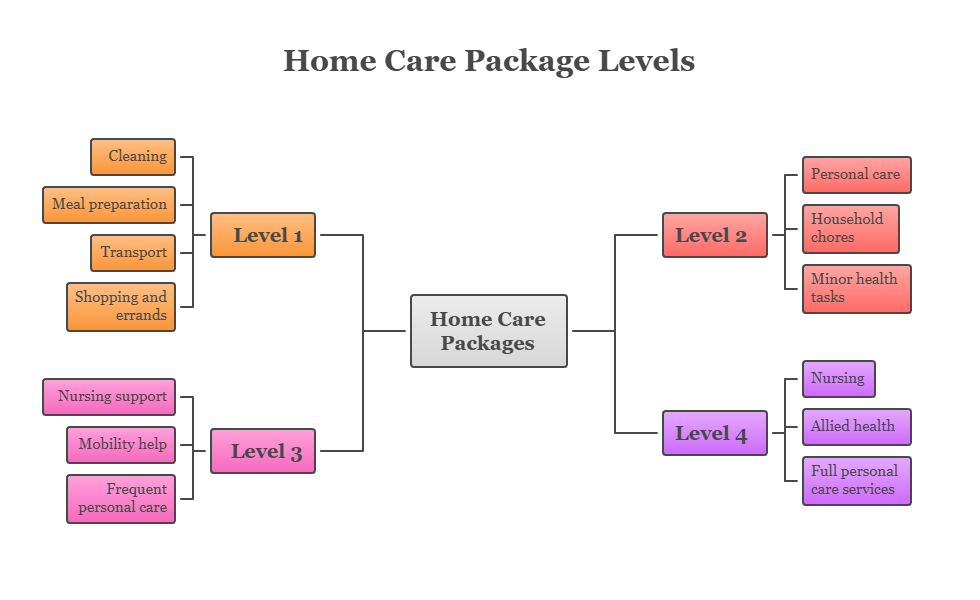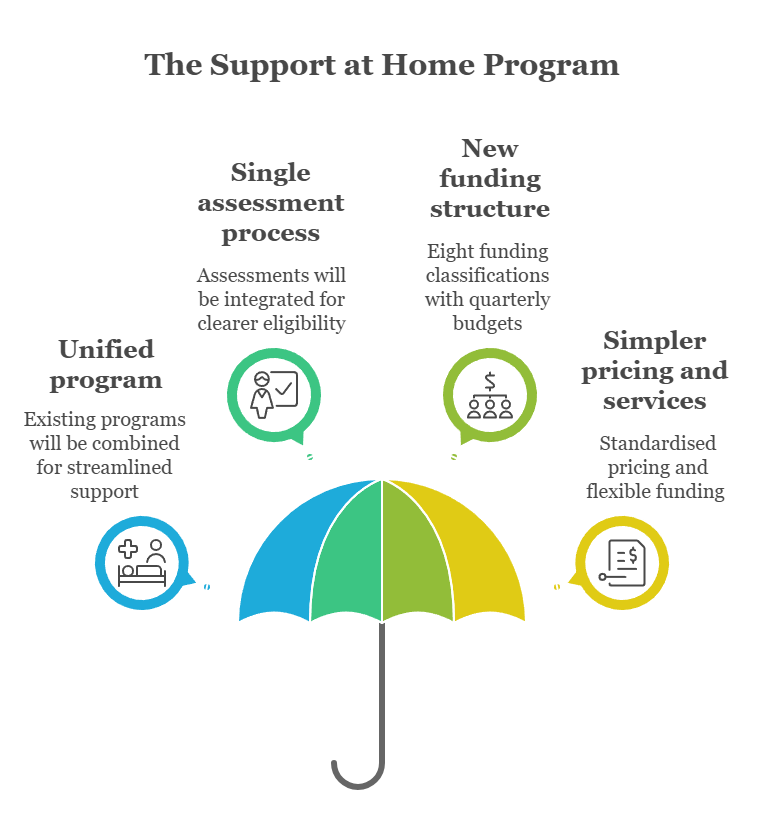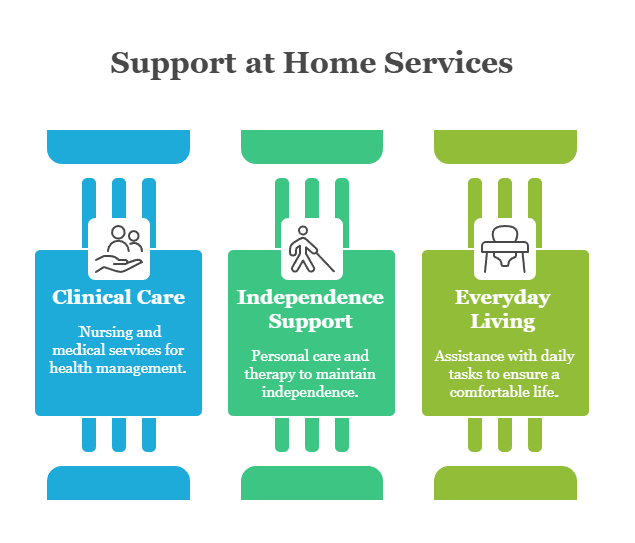Your Home Care Package eligibility guide
Read this article to learn the 2025 Home Care Package eligibility criteria, assessment steps, and what to expect when the Support at Home program arrives.
Author: Sensible Care

Home Care Package eligibility is based on age, residency, and care needs. But these criteria aren't set in stone. Significant changes will occur in November 2025 when the Support at Home program replaces the current system.
Whether you can apply for a Home Care Package (HCP) depends on your age, residency, and care needs.
You must be at least 65 years old, an Australian resident, and someone who needs home aged care support.
You'll undergo a formal assessment through the Single Assessment System. This process determines your eligibility and the right level of support for you.
However, things are about to change soon.
In 2025, major reforms will change the in-home care system, which includes the eligibility assessment.
On 1 November 2025, the Support at Home program will replace Home Care Packages.
There will be one clear assessment process for all older Australians who need help to stay independent at home.
Basic Home Care Package eligibility requirements
Before you can receive a Home Care Package (HCP), you must meet certain eligibility criteria set by the Australian Government.
These rules ensure that funding goes to people who genuinely need coordinated home support.
Right now, basic HCP requirements revolve around:
- Age
- Residency status
- Aged care needs

Understanding these requirements helps you know whether you or someone you care for may qualify for a package.
You'll also know what to expect during the assessment process.
Age
To meet HCP eligibility, you need to be an older Australian.
You can qualify for a Home Care Package if you are:
- 65 years or older
- 50 years or older if you're an Aboriginal or Torres Strait Islander person
Note that younger people with disabilities, dementia, or other complex needs can also apply.
This is typically the case if other programs, such as the National Disability Insurance Scheme (NDIS), do not meet their needs.
My Aged Care reviews each application on a case-by-case basis. Eligibility focuses on care needs, not just age.
Residency
To be eligible for a Home Care Package in Australia, you must live in Australia and be one of the following:
- An Australian citizen
- A permanent resident
- The holder of an eligible visa
Eligible visa types include:
- Special Category Visa (subclass 444) - New Zealand citizens
- Protected persons and refugees
- Partner visas (provisional and permanent)
- Bridging visa holders in specific circumstances
- Some humanitarian visas
These Home Care Package requirements ensure that government funding supports people who live in Australia on a long-term basis.
If you are temporarily overseas, you can usually continue receiving care for a limited period. But eligibility may lapse if you remain outside Australia for too long.
Aged care needs
Your eligibility for Home Care Packages depends on your care needs, not your income or savings.
You may qualify if you need ongoing help with daily tasks such as:
- Showering, dressing, or personal care
- Cleaning, cooking, or laundry
- Shopping or transport
- Managing medications or health conditions
An aged care assessment determines whether your needs are high enough to justify a coordinated care package.
If you only need minimal help, you might instead be referred to the Commonwealth Home Support Program (CHSP), which provides entry-level aid.
Note that after July 2027, the CHSP will also be absorbed by the new Support at Home program, which we'll discuss later.
Exceptions
Specific exceptions to the Home Care Package eligibility requirements include:
- People aged 50-64 who are homeless or at risk of homelessness
- People aged 45-64 (Aboriginal/Torres Strait Islander) in similar circumstances
- Early-onset dementia (diagnosed under 65)
- Multiple sclerosis and other progressive neurological conditions
- Younger people needing to co-reside with older family members receiving aged care
Those initially turned down can seek another evaluation if their situation changes.
Application and assessment process
The next step is to go through the application and assessment process.
This process should confirm your HCP qualification and match you with the right level of support based on personal circumstances.
My Aged Care and the Single Assessment System
You start by contacting My Aged Care. You'll answer some questions about your:
- Health
- Daily routine
- The help you need at home
- Your current living situation
This assessment used to go through an Aged Care Assessment Team (ACAT).
But since December 2024, aged care assessments have transitioned to the Single Assessment System workforce.
This system combines the previous ACAT and Regional Assessment Service (RAS) functions into one process.
Assessments can happen:
- At-home
- By phone
- By video
- In facilities
If you're eligible, you'll receive a referral code to use with your chosen provider.
Financial assessment
While Home Care Package eligibility is based on your care needs, there is also a financial step.
You might have to complete an income assessment through Services Australia.
This determines whether you need to contribute an income-tested care fee toward your package.
Many pensioners and part-pensioners pay little or nothing, while those with higher incomes may pay a modest contribution.
The goal is to ensure that government funding is distributed fairly across all participants.
Wait list
Once approved, you'll join the national priority queue for Home Care Packages.
Wait times depend on your level of assessed need and the urgency of your situation. As of late 2025, typical wait times are:
- Level 1: 9 to 12 months
- Level 2: 9 to 12 months
- Level 3: 9 to 12 months
- Level 4: 9 to 12 months
People with high-priority approval wait less than one month for their package, regardless of the level.
Note that wait times for package activation can fluctuate regionally.
While you wait, you may still receive limited support through the Commonwealth Home Support Program (CHSP) or short-term restorative care.
Sensible Care can guide you through this waiting period. We can help you prepare for your package activation once funding becomes available.
Of course, the wait times will change when the Support at Home program starts.
Current Home Care Package levels
When you're approved for a Home Care Package, you'll get a level of care based on your needs.
In Australia, there are four Home Care Package (HCP) levels, ranging from basic support to high-level, complex care.

Each level comes with a different amount of government funding to match the intensity of care you require.
Understanding at what level you're approved helps you plan what services and budget you can expect.
Level 1—Basic care needs
This level is for people who need a small amount of help at home.
Support might include:
- Cleaning
- Meal preparation
- Transport
- Help with shopping and errands
It's designed for older Australians who are mostly independent but need some help to stay safe and comfortable at home.
As of October 2025, the funding amount for Level 1 is $10,986.50 annually ($421.40 fortnightly).
Level 2—Low care needs
Level 2 packages provide regular ongoing support for people with more consistent needs.
You might receive help with:
- Everything covered in Level 1
- Personal care
- Household chores
- Minor health-related tasks
Many people who start at Level 2 find it gives enough flexibility to manage their daily routine confidently.
The funding amount for Level 2 is $19,319.45 ($741.02 fortnightly).
Level 3—Intermediate care needs
Level 3 is for people who need moderate to high levels of care.
This may include:
- Everything covered in Levels 1 and 2
- Nursing support
- Mobility help
- Frequent personal care
It's ideal for those with chronic conditions or limited mobility who still wish to remain at home rather than move to residential care.
The funding amount for Level 3 is $42,055.30 ($1,613.08 fortnightly), as of October 20025.
Level 4—High care needs
This is the highest level of support available under the current Home Care Package system.
It's designed for people with complex or intensive care needs. It's for those who often need daily help from qualified professionals.
Level 4 recipients may receive:
- Everything covered in Levels 1,2, and 3
- Nursing
- Allied health
- Full personal care services
The most funding goes to Level 4, currently $63,758.20 yearly ($2,445.52 fortnightly), as per the latest data.
Major changes coming November 1, 2025
Australia's aged care system is about to undergo significant reform.
On 1 November 2025, the Support at Home program will officially replace the current Home Care Package (HCP) system.
This change is part of the Australian Government's broader plan to simplify, modernise, and improve the delivery of in-home aged care.
The aim is to make services easier to access, more consistent, and better matched to each person's needs.
The Support at Home program
Here's what you need to know about the Support at Home program:
- One unified program
Support at Home will combine several existing programs. This includes Home Care Packages and Short-Term Restorative Care. The Commonwealth Home Support Program (CHSP) comes later, expected no earlier than 1 July 2027.
- Single assessment process
All older Australians seeking in-home care will go through one integrated assessment rather than separate pathways for CHSP or HCP. This will make it clearer who qualifies for what kind of support.
- New funding structure
Instead of the four Home Care Package levels, the Support at Home program will introduce eight funding classifications. Each will come with its own quarterly budget, which better reflects your personal level of need.
- Simpler pricing and services
The new model will standardise service pricing across all providers. It will also allow more flexibility in how funding is used.

Support at Home will organise services into three categories:
- Clinical care: nursing, allied health, medication management
- Independence support: personal care, mobility help, therapy services
- Everyday living: cleaning, meal preparation, transport, social support

Transition for existing clients
If you already have a Home Care Package or are on the national waitlist, you won't lose your place or need a new assessment.
You'll automatically move into the new Support at Home system at a comparable level of care.
Your current funding and services will continue without interruption under a "no disadvantage" policy.
Sensible Care will guide all clients through this transition. We will make sure that your support plan, services, and care team remain consistent as the new program begins.
Home Care Package eligibility made easy with Sensible Care
Knowing the eligibility for a Home Care Package can help you plan the right support for yourself or a loved one.
At Sensible Care, we make this process easier.
Our team can help you check your HCP eligibility, complete your My Aged Care assessment, and prepare for the transition to Support at Home.
You will stay safe, supported, and independent at home throughout this entire process.
Contact Sensible Care today to find out how we can guide you through every step.
Take the Next Step in Care
Download our Info Kit or speak to one of our friendly team members today.
Need Help Getting Started?
Reach out on your terms, pick a time that suits you and let’s talk about how we can help.
.webp)
.svg)
.webp)

